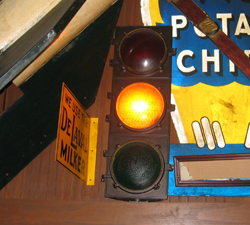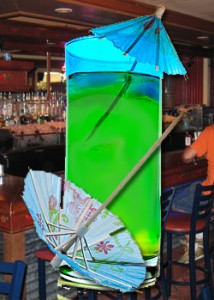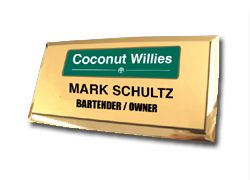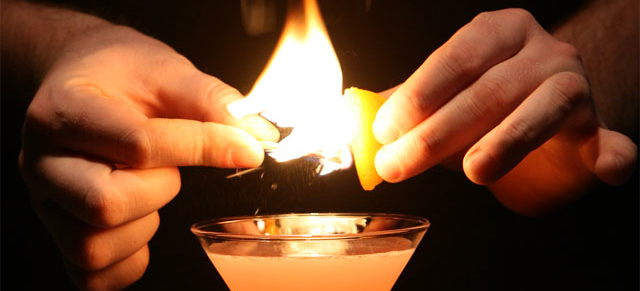Utlizing ‘AI’ Artificial Intelligence Software in the Hospitality Industry
Have you ever wanted more time and more help in your...

Please don’t think I get all my ideas from cartoons. But I was powerfully reminded of the differences between the US and the rest of the world when I read a recent blog by Scott Adams, creator of the “Dilbert” comics:
http://dilbertblog.typepad.com/the_dilbert_blog/2007/05/index.html. It’s the two blog entries about halfway down, “Oh Great Blog Brain” and “900 Comments and Counting”.
If you can’t be bothered to click and scroll a little, here’s the deal: Adams co-owns two restaurants, and has himself absolutely zero experience of the restaurant biz. He makes the point that because service and food quality are about the same for all restaurants in his restaurant’s area, things you wouldn’t think about really make a huge difference, such as:
- lighting
- if it’s Italian or Mexican themed, where everyone knows the cuisine and knows there’ll be something they like.
And he says something most bartenders can tell you right off the bat: advertising doesn’t work for bars and restaurants. We’ve all worked for big companies and seen them absolutely rushing to burn money on TV and radio ads, right? Even those little local newspaper ads and radio spots all add up – and never work. The only way advertising can work is if you have a special one-off event designed to attract people who wouldn’t usually come. And even then you have to think: if those people wouldn’t usually come, why try to get them in just one time? You need repeat guests just to break even, let alone make a profit, and if these punters aren’t coming now, they won’t come after your special event has folded it’s tent and vamoosed.
 Lighting’s something bartenders only think about when there isn’t enough. I always loved the VooDoo lounge at the Rio because it was so dark; it was my idea of how dark a bar should be. But you could still see each other and count your money at the bar: it was well designed. Especially where food’s involved, lighting’s clearly important. TGIF bartenders are told about the intentionally red lighting around the bar to relax guests and facilitate suggestive selling. Most Fridays also have a traffic light somewhere in the room that cycles through red-amber-green in a way designed to give the impression there’s some activity in the room, even if there isn’t a single guest.
Lighting’s something bartenders only think about when there isn’t enough. I always loved the VooDoo lounge at the Rio because it was so dark; it was my idea of how dark a bar should be. But you could still see each other and count your money at the bar: it was well designed. Especially where food’s involved, lighting’s clearly important. TGIF bartenders are told about the intentionally red lighting around the bar to relax guests and facilitate suggestive selling. Most Fridays also have a traffic light somewhere in the room that cycles through red-amber-green in a way designed to give the impression there’s some activity in the room, even if there isn’t a single guest.
 I’m down with Adam’s assessment of people-order-what’s–familiar as well. How many times a night do you get a drink order and you know, you just KNOW the person ordering it has never drunk it before, never seen it drunk, has no idea what’s in it or how it tastes but is, in fact, just ordering the drink because it’s the only cocktail name they know? A sampling from my own archives: fifteen-year-old girls ordering James Bond martinis, well-dressed successful middle-aged businessmen ordering Fuzzy Navels, self-confessed never-had-a-cocktail-in-their-lives drinkers wanting to start off by ordering classic margaritas. All this is why guests so often just settle for a beer or a glass of wine or a Jack and coke: these are safe orders that can’t go wrong. They’d love the reward of being able to order a cocktail but aren’t willing to take the risk they’ll look silly. We learn about food when we’re young and don’t care about looking silly, but we learn about drinks when we get older and are more concerned about what people think. Hence the just-give-me-a-beer syndrome.…
I’m down with Adam’s assessment of people-order-what’s–familiar as well. How many times a night do you get a drink order and you know, you just KNOW the person ordering it has never drunk it before, never seen it drunk, has no idea what’s in it or how it tastes but is, in fact, just ordering the drink because it’s the only cocktail name they know? A sampling from my own archives: fifteen-year-old girls ordering James Bond martinis, well-dressed successful middle-aged businessmen ordering Fuzzy Navels, self-confessed never-had-a-cocktail-in-their-lives drinkers wanting to start off by ordering classic margaritas. All this is why guests so often just settle for a beer or a glass of wine or a Jack and coke: these are safe orders that can’t go wrong. They’d love the reward of being able to order a cocktail but aren’t willing to take the risk they’ll look silly. We learn about food when we’re young and don’t care about looking silly, but we learn about drinks when we get older and are more concerned about what people think. Hence the just-give-me-a-beer syndrome.…
 Want to get cocktail sales up in your bar! Overnight? Hang up a chalkboard with “Cocktail of the Day” on it, together with a sketch of the glass and the most important ingredients. Guaranteed winner, at least if the bar team have selected a halfway decent drink. Everyone orders the special in the restaurant, why wouldn’t they order it in the bar? And they know what glass it’ll come in and if it’s the special it must be good. This may sound a little cheesy to the stylish young bartenders reading this, but believe me: a Cocktail of the Day board works wonders in building long-term cocktail-savvy guests. Guests will order a cocktail who wouldn’t have before. Period.
Want to get cocktail sales up in your bar! Overnight? Hang up a chalkboard with “Cocktail of the Day” on it, together with a sketch of the glass and the most important ingredients. Guaranteed winner, at least if the bar team have selected a halfway decent drink. Everyone orders the special in the restaurant, why wouldn’t they order it in the bar? And they know what glass it’ll come in and if it’s the special it must be good. This may sound a little cheesy to the stylish young bartenders reading this, but believe me: a Cocktail of the Day board works wonders in building long-term cocktail-savvy guests. Guests will order a cocktail who wouldn’t have before. Period.
I said the article underlined a difference between the US and the rest of the world and it’s this: Adams’ restaurants can’t compete on food quality or service, because everyone around them is pretty good. That’s not universal. An example: I live in a suburb of Rotterdam (pop. 1 million or so) named Spijkenisse (pop. 90,000, give or take). There isn’t a single decent restaurant in town. There’s a fancy place that simply can’t deliver the quality to match the prices they’re charging. There are a couple of cafes (little bar-restaurants) that serve food poorly executed (boiling soup, little use of fresh ingredients,) and a pizza place that does some OK pasta. That’s it.
Usually in the world, you will get by on the food quality and service; it’s a testament to the much-maligned US system that the standard can rise so high those factors can be taken for granted. And that brings me to the topic of the post: The Little Bar That Could.
 It’s a bar opened by bartenders, who know the business inside out and while they like the people, they don’t like the business side too much. They open a bar the way they want it to be. Car loans, increased mortgages, years of tips saved and consulting fees banked, borrowings from friends, families and fools. Great drinks, friendly staff, good opening times, using fresh ingredients and the right techniques. They know they won’t make a packet out of it, but they’re not making less than when they were bartending – because they still ARE bartending. Sure, they’ve had to make compromises: sometimes you simply don’t have the cash to open without a deal with a liquor or soft drinks or beer company. In Holland, the beer companies own virtually all the locations, so you kinda gotta work with them. But the bar doesn’t make the stupid mistakes others do. There isn’t a drinks brand on every menu, ashtray, coaster and wall. They don’t waste money on advertising.The backbar doesn’t look like a shop window for Vodka X or Rum Y. The bartenders know their stuff. You won’t get a blank look if you ask what single malts they have or if they can make a Negroni or a Tre or if they have any wheat beer. The waitstaff know what they’re selling. The music isn’t ear-splitting or cutting-edge. You can sit at the bar or at a table, but there isn’t much vertical drinking.
It’s a bar opened by bartenders, who know the business inside out and while they like the people, they don’t like the business side too much. They open a bar the way they want it to be. Car loans, increased mortgages, years of tips saved and consulting fees banked, borrowings from friends, families and fools. Great drinks, friendly staff, good opening times, using fresh ingredients and the right techniques. They know they won’t make a packet out of it, but they’re not making less than when they were bartending – because they still ARE bartending. Sure, they’ve had to make compromises: sometimes you simply don’t have the cash to open without a deal with a liquor or soft drinks or beer company. In Holland, the beer companies own virtually all the locations, so you kinda gotta work with them. But the bar doesn’t make the stupid mistakes others do. There isn’t a drinks brand on every menu, ashtray, coaster and wall. They don’t waste money on advertising.The backbar doesn’t look like a shop window for Vodka X or Rum Y. The bartenders know their stuff. You won’t get a blank look if you ask what single malts they have or if they can make a Negroni or a Tre or if they have any wheat beer. The waitstaff know what they’re selling. The music isn’t ear-splitting or cutting-edge. You can sit at the bar or at a table, but there isn’t much vertical drinking.
Bars like this exist, and they’re successful. If they only open six nights a week, I know of half a dozen that close on Saturday night. Shocking, you may think – but you haven’t seen how busy these places are on a Monday or a Tuesday night, precisely because they don’t cave and allow in the bridge-and-tunnel gawpers on Saturdays. These bars do compete on service and quality, but they’ve got something else as well. They’re truly guest-oriented, aimed at giving guests a great time and not necessarily shoving the new RTD down their throat. And they don’t have much competition: how many bars do you know that fit the bill? They really care about their guests, and because of that, they’re successful. So go to Trio Bar or Rum Traders (Berlin), Schumann’s (Munich), Milk & Honey, East Side Company, Little Branch or Death & Co. (New York), The Lab, B@1 (London), Jake’s (Leeds, UK) or Bar K (Osaka). They’re all little bars that could, and they did. So can you. Open one. The world needs more of them.
Have you ever wanted more time and more help in your...
MANGO MAGIC: Marco Estrada, Brownsville, TX 1 ½ oz Aviation Gin ¾...
ALOE WOK: Olya Sabanina, Saint Petersburg, Russia 1 1/3 oz Aviation Gin...
We have all strived to become better at our craft, or else,...
About the author, Elton Marvin Jr. has worked in the food and...
From starting out picking up a Flairco bottle after watching the movie...

Your cart is empty.
Click “Play” on the video above.
Click “Play” on the video above.
Click “Play” on the video above.

